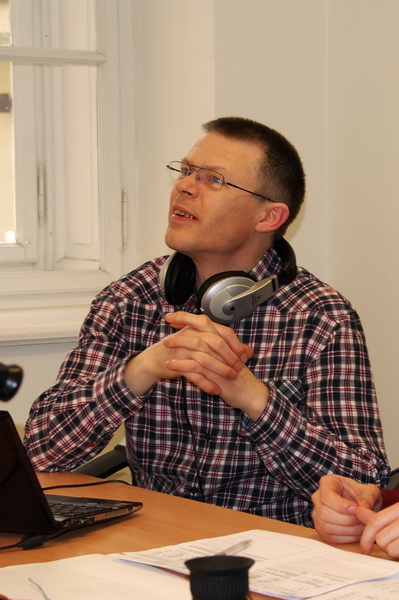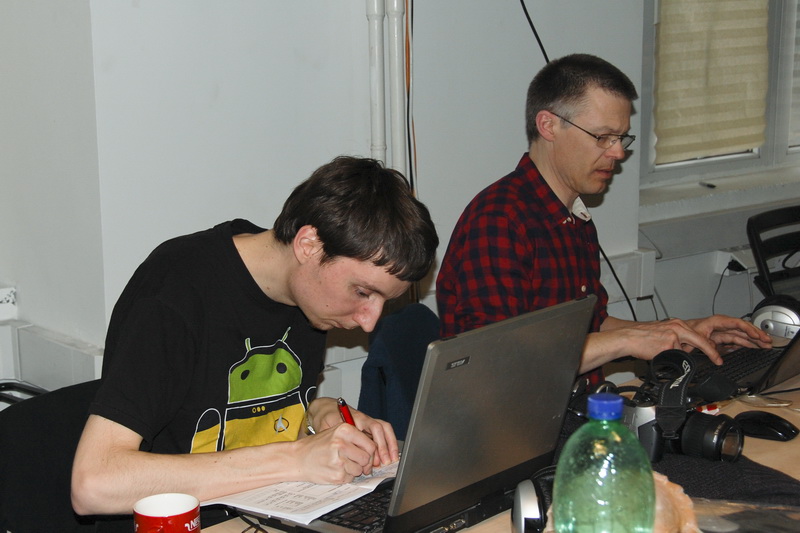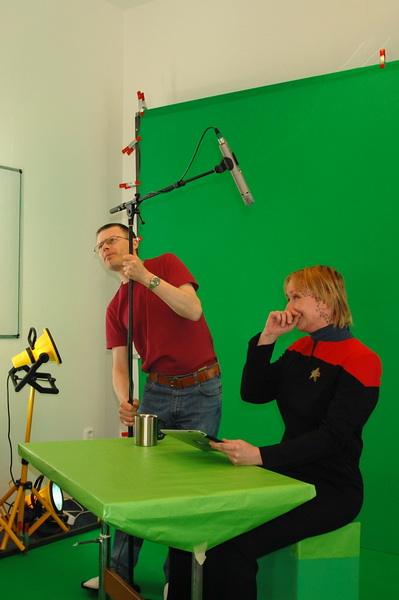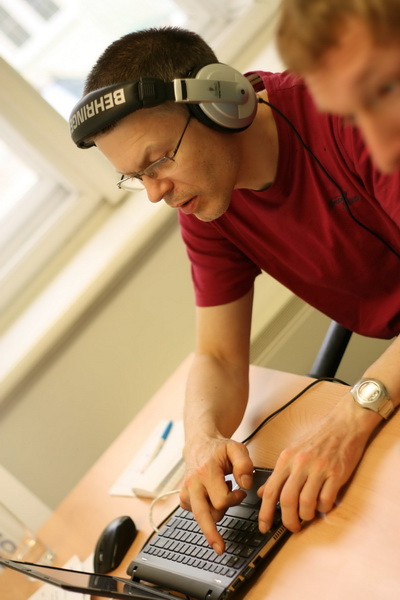Sound
One of the technical weaknesses of Star Trek: Metren Incident fanfilm was undoubtedly sound. Given the available technology (low-quality microphone attached to the broom stick, etc.), some of the dialogues in the first fanfilm were difficult to understand. We have learned from this and for our a new fanfilm Star Trek: Secret Games our team was joined by a sound engineer Zbynek Suchy. Zbynek has his own recording studio (www.dogstudio.cz) and he deals with sound setup and recording from concerts and theater performances.
|
Why will be sound in Star Trek: Secret Games better than in the first fan film - Star Trek: Metren Incident?
The film is shot 6 years later and the sound is recorded with professional technology (eventhough when compared to television or Hollywood somewhat "entry-level").
|
|
What equipment do you use for sound recording?I have condenser microphones AKG C-1000 with hypercardioid (directional) extension. For wireless transmission I use LD eco 2x2 dual diversity UHF diversity receiver + two bodypacks + two miniature electret microphones (These microphones are not so professional, but similar once from Sennheiser cost tens of thousands). I record audio in four tracks via the external USB sound card ESI ESU 1808 to the laptop. |
|
|
|
|
Which software do you use?I use Sony Vegas Pro 12, Sony Soundforge 9 and Magix Samplitude Pro X. |
|
For Star Trek: Secret Games you made a set of custom made portable microphones. What are their advantages and where are they going to be used?These microphones are miniature electret capsule attached via cable to a bodypack (transmitter) LD. The sound is acceptable and the costs are in the range of tens of CZK. Similar products from no-name manufacturers costs around CZK 500-1500 and use the same capsule and solution. Professional products from DPA, Sennheiser, etc. are around 10-15 thousand, and increase in quality is not so huge. I would of course not dare to claim the same about studio or concert vocal microphones, where branded and expensive solutions are necessary and inexpensive alternative solutions basically do not work. For my miniature microphones I need to solve the "swish" caused by the cable when it gets in contact with body or a T-shirt (sorry - the Starfleet uniform). |
 |
What are the ideal conditions for audio recording? Can they be achieved in amateur conditions?The main condition for ideal sound recording is well sound dumpened room with carpet and furniture along the walls and curtains on the windows to prevent clutter and echo. This can be achieved in amateur conditions, unfortunately, this is not the case for the place where we shoot.
|
 |
What is the difference in recording sound in the interiors and exteriors?When recording sound for film in exteriors, there is a problem with reverberation caused by the room, but another issue is the wind. In the past, I was setting up sound system for many concerts both in the concert halls and in the open, and generally outside it plays better.
|
 |
What will be the process for audio post-production? What is the most dificult?The separately recorded sound must be first matched to the image in the editing software. This is tedious work which takes hours and hours, so I was very happy that I got offered help on this from Zana.When this is done, I will have 6 audio tracks: (2x AKG wireless 2x and 2x audio from the camera) and for every person in every dialog I have to choose the track that sounds the best. This will result in one monophonic dialogue track, which is then mixed into stereo based on the visual placement of the person speaking. Next step is to add musical and sound tracks. Then follows the mixing (dynamic setup of the volume setting of these tracks in time) so that the result is understandable and compact. Finally, mastering is done. This is the adjustment of the dynamics of sound and other, rather technical than artistic adjustments, so that it "sounds" better. Zbyněk Suchý |
|
Translated to English by Annie









